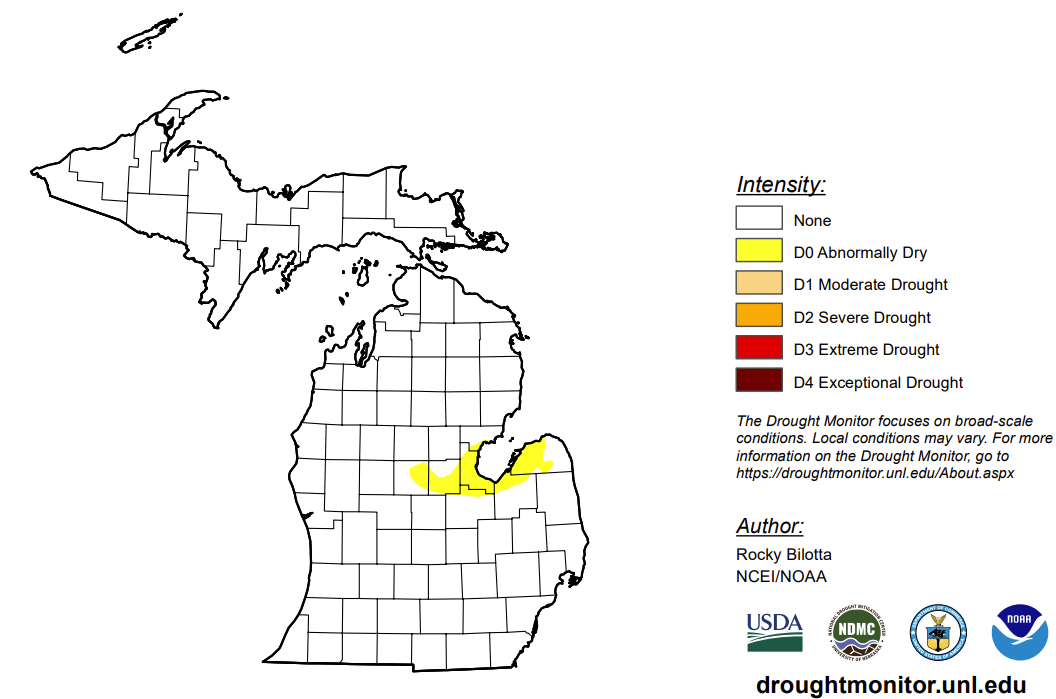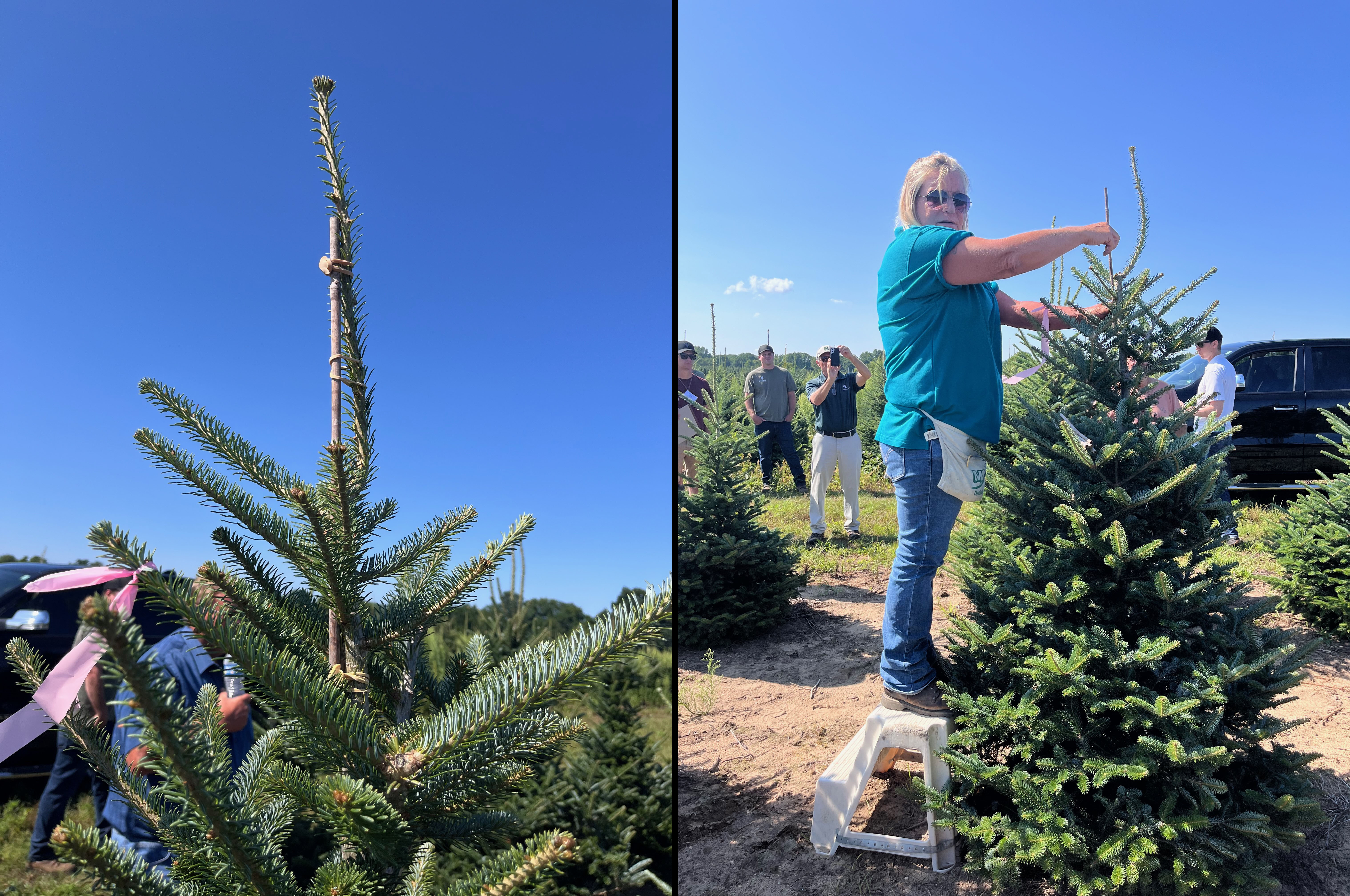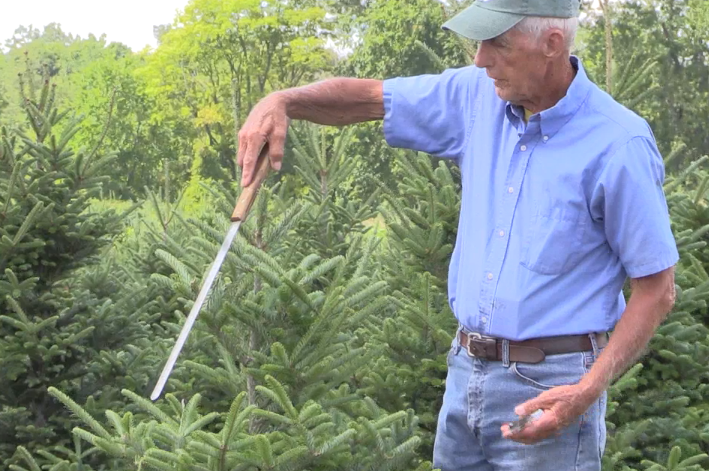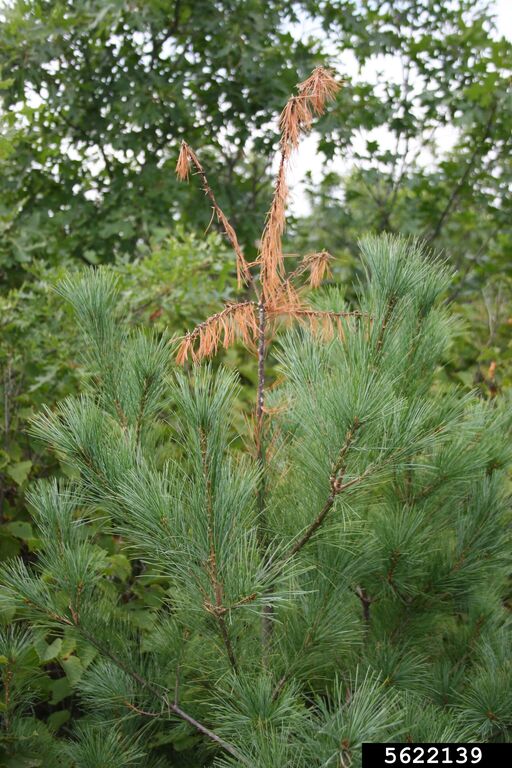Christmas tree farm report – July 26, 2024
Consistent rains have benefited Christmas tree fields and growers are busy shaping shingle-needle conifers.

Weather update
Growing degree-day accumulations (GDD) range from 1,792 in southern Michigan to 1,200 in northern Lower Peninsula to 1,000 in the Upper Peninsula (Photo 1). Most of the Lower Peninsula is 10 to 14 days ahead of normal for GDD accumulation, whereas most of the Upper Peninsula is near average to 10 days behind normal (Photo 2). These differences have been consistent throughout the 2024 growing season. Consistent rainfall events continue to provide adequate soil moisture over the majority of the state. The only exception includes portions of Isabella, Huron, Bay, Midland and Tuscola counties that are in the initial stages of drought (Photo 3).


Shearing and pruning update
Growers have begun shearing and pruning single needle conifers (firs, spruces and Douglas fir). For pines (Scots, white pine), shearing should have already been completed to maximize future bud set. There are many variations in grower pruning strategies and techniques. However, overall goals are to produce a tree that is straight, symmetrical and conical in shape. Michigan State University Extension recommends the following guidelines to develop these tree characteristics.
1) Select one leader. The first goal is to maintain a single, straight leader in the center of the tree. When multiple shoots are competing as a leader, preference should be given to maintain the shoot that is most centrally located. If there are multiple leaders and neither is centrally located, growers often tie the most upright one (Photo 4). After selecting the leader, remove any competing leaders.

2) Set leader length. In most situations*, leader growth each year should be limited to 12 to 16 inches. When leaders are left longer, the tree structure will be affected with excessive distance between whorls. Leaving a natural terminal bud is most desirable, but when needed, trim leaders back to 12 to 16 inches, with a lateral bud at the top of the remaining shoot. This will become next year’s leader.
*Some growers successfully leave leaders longer depending on the tree species, especially early in the rotation when there is good bud density. Overall tree structure and time to harvest will impact the success of this strategy.
3) Set tree taper. In most situations, a 2/3 tree taper is preferred (i.e., a tree 6 feet tall is 4 feet wide at the base). To create this taper, trim all current year growth to 2/3 the length of the leader in the whorl of shoots directly below the leader. For example, if the leader is 12 inches, the top whorl of shoots should be trimmed back to 8 inches.
4) Carry taper down the tree. After taper of the top whorls is set, use a shearing knife or other pruner to bring this angle downward to the base of the tree, removing any shoot growth outside of this angle (Photo 5). This creates the desired conical shape. You should only be removing a portion of the current year’s growth, not cutting back into older wood.

Insect update
White pine weevil damage (Photo 6) is being reported by several growers in the southern Lower Peninsula. Damage is being reported in white pine and Norway spruce blocks. White pine weevil can attack any pine and spruce species (not fir or Douglas fir). The overwintering generation of white pine weevil will emerge from infected shoots between 1,200 to 1,400 GDD. For the majority of Michigan, we are past this point in development. Removal and destruction of infected shoots will no longer serve as a means of control. In severe infestations, an insecticide targeting this overwinter population is possible, however your best method of control will be early insecticide targeting tree leaders in the spring of 2025.




 Print
Print Email
Email

